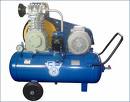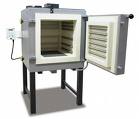The procedure for drawing up plans for organizational and technical measures to save electrical energy
To ensure the rational and economical use of energy in production, enterprises annually develop plans for organizational and technical measures for average reduction specific levels of electricity consumption.
These plans envisage concrete measures to reduce energy consumption by improving production processes, introducing new technologies, increasing the productivity of existing equipment, improving production methods and work methods, and automation.
The main task of developing and implementing measures for saving energy is the elimination or drastic reduction of electricity losses in consumer installations.
 Energy losses must be divided into irreparable losses (or losses whose elimination is economically unjustified) and losses whose elimination under the given technical conditions is possible and economically feasible.
Energy losses must be divided into irreparable losses (or losses whose elimination is economically unjustified) and losses whose elimination under the given technical conditions is possible and economically feasible.
Fatal energy losses are electrical (in equipment and networks), mechanical (in machine tools and transmissions), pressure losses in pipelines, heat losses in equipment and heating networks, etc.
Loss of electricity, the elimination of which is possible and economically feasible, can be divided into:
a) losses caused by unsatisfactory operation of equipment and engineering networks;
b) losses caused by design defects in the equipment, wrong choice of technological mode of operation, lag in the development of engineering networks, etc.
 Losses caused by unsatisfactory operation of equipment and utility networks include:
Losses caused by unsatisfactory operation of equipment and utility networks include:
1. Irrational use of lighting installations.
2. Leaks of compressed air, service water, oxygen, process fluids and gases due to poor condition of pipelines, connecting and shut-off valves.
3. Excessive heat losses due to poor thermal insulation of electric furnaces, radiation losses through open windows of melting furnaces and heat treatment furnaces, idling of heat furnaces.
4. Incomplete loading of technological equipment, unplanned downtime, equipment malfunction, technological disturbances that cause idling and irrational use of units, lack of flow charts that determine the optimal operation of equipment, poor organization of workplaces.
5. Excessive losses of electricity in electrical equipment and networks: the presence of oversized electric motors, idling operation of welding transformers, technological equipment, lack or insufficiency reactive power compensation, operation of network transformers during weekends and night load hours.
 Losses caused by design defects in equipment, wrong choice of technological mode of operation, lag in the development of engineering networks, failure to use the latest technologies and modern equipment include the following.
Losses caused by design defects in equipment, wrong choice of technological mode of operation, lag in the development of engineering networks, failure to use the latest technologies and modern equipment include the following.
1. Irrational exploitation compressor installations.
2. Irrational operation of electric arc steel and induction furnaces.
3. The presence of large blanks, which leads to an increase in the volume of mechanical processing, processing of small-sized parts on large unique machines, insufficient use of plastic molding compounds (drastically reducing blanks), insufficient production of forgings in dies in conditions of volume, lack of equipment for precision casting, cold extrusion, etc.
4. Imperfect water supply system.
5. Operation of technological and electrical equipment with increased losses or reduced productivity.
When developing a plan for organizational and technical measures to save energy resources, measures to eliminate and reduce energy losses should be divided into:
a) organizational measures carried out without additional costs. For example, cleaning window openings, maintaining lighting on and off schedules, removing compressed air leaks, hearths, fully charging electric ovens, etc.;
b) activities under the current order, carried out at the expense of the enterprise or bank loans.For example, repair and modernization of equipment, restoration or reconstruction of thermal insulation of electric furnaces, introduction of automation for control of technological processes or units, reconstruction of engineering networks (replacement of valves, increase of pipe sections, installation of coolers for the circulating water supply system and etc.);
c) measures from the reconstruction order.
 The preparation, development and implementation of plans for organizational and technical energy-saving measures have great organizational importance, they are necessary forms of systematic and effective use of non-productive costs and savings in any production.
The preparation, development and implementation of plans for organizational and technical energy-saving measures have great organizational importance, they are necessary forms of systematic and effective use of non-productive costs and savings in any production.
In the preparation of plans for organizational and technical measures, not only employees of energy services, but also heads of workshops, sections, technologists, mechanics, economists and advanced workers should participate.
The plan for organizational and technical measures must include measures for rational energy consumption; introduction of more advanced technological processes and equipment that require lower specific energy consumption; combating power losses in all parts of the enterprise's energy consumption.
For each activity included in the plan, it is necessary to determine its economic efficiency.
In order to analyze the results of the use of electricity for the reporting period and the specific levels of electricity consumption established by the enterprise, it is important to correctly prepare reports on the implementation of organizational and technical measures.
When preparing plans for organizational and technical measures, it is necessary to take into account the following concepts.
1.Conventional annual energy savings — the economic effect in knlovat-hours that can be achieved in one year, provided that all measures provided for in the plan are used.
2. Actual energy savings resulting from the measures taken in this quarter or for another reporting period after the implementation of the measures.
3. Energy savings obtained in this quarter from activities performed in previous quarters. If the measures are not fully implemented, then in the reports for the quarter it is necessary to indicate the conditional annual savings corresponding to the volume of work actually performed.
A more accurate determination of the actual energy saved can be calculated from the metering devices. In the event that an installation or a workshop or a separate unit does not have independent accounting, the resulting savings are determined by calculation based on the schedule of implementation of the measures and the actual volume of work performed.
For measures of a purely routine nature, for example, maintaining the optimal mode of operation of the equipment, organizing systematic monitoring of the technical condition of the equipment, applying progressive measures and modes, the conditional annual savings will correspond to the actual achieved during the reporting monthly cycle. At the same time, energy savings are achieved only during the period of operation of the work factors and will stop in the absence of intervention of the operational or service personnel on duty.
